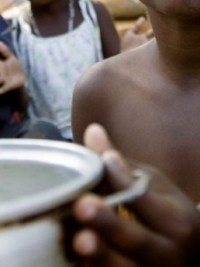(Haiti Libre) - 12/02/2015 10:47:45
 |
This could lead to a situation of urgency if rapid action is not in place to correct these nutritional deficiencies. This analysis was conducted by the IPC Technical Working Group under the leadership of the National Food Security Coordination (CNSA).
The evolution of rainfall during 2014 was irregular. These conditions have had a significant impact on agricultural practices, reducing daily jobs, revenue opportunities and crop yields. For example, crops of cereals and tubers decreased by 40% compared to 2013. The recurring drought in areas with low agricultural potential and lack of investment in areas of greater capacity did not allow a level sufficient crops. However, the stagnation of food prices and the implementation of most vulnerable support programs have helped minimize the negative impact on access to food for households, even if they are still forced to resort to unsustainable coping strategies.
The projected position by the Technical Working Group of the IPC, reported a probability between 65 and 75% for the period from March to June 2015, that the climatic phenomenon "El Niño" affects Haiti. The impact of this phenomenon could be felt on the yields of the winter campaign and those of spring 2015. This could lead to a rise in prices of local products during the lean season (exhaustion of local food stocks).
The team of experts anticipated that some agro-ecological areas will likely be in a position of "food crisis" (Phase 3) during the period from March to June, including: plains areas of North and dry mountains of Northwest, semi-humid mountain, areas dry plains and mountains of the South East and the plains and dry mountains of the island of Gonâve.
Households in these areas will have to face reduced food consumption: food stocks to their lowest level, access to water increasingly precarious, increased dependence on market and purchasing power growing weak. One can also envisage recourse to negative coping strategies include increased selling young cattle, cutting of trees for charcoal production and emigration.
It is therefore urgent to remedy the situation in order to fill potential gaps to which populations would face and prevent these departments falling into a phase of crisis that require humanitarian interventions. Indeed, from Phase 3, emergency actions are necessary because the most vulnerable 20%, face increased mortality risks due to repeated food shortages (reduction of quantity, quality and diversity of meals) and a deterioration of the nutritional status of the most vulnerable (children under 5, pregnant and lactating women and elderly or severely disabled persons).
No comments:
Post a Comment